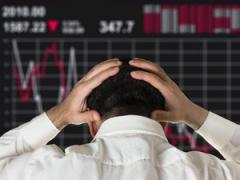
One point is undisputed: the autocratic ruler of the Federal Reserve System, from its inception in 1914 to his death in 1928, was Benjamin Strong, a New York banker who had been named governor of the Federal Reserve Bank of New York. Strong consistently and repeatedly used his power to force an inflationary increase of money and bank credit in the American economy, thereby driving prices higher than they would have been and stimulating disastrous booms in the stock and real-estate markets. In 1927, Strong gaily told a French central banker that he was going to give “a little coup de whiskey to the stock market.” What was the point? Why did Strong pursue a policy that now can seem only heedless, dangerous, and recklessly extravagant?
Once the government has assumed absolute control of the money-creating machinery in society, it benefits — as would any other group — by using that power. Anyone would benefit, at least in the short run, by printing or creating new money for his own use or for the use of his economic or political allies.
Strong had several motives for supporting an inflationary boom in the 1920s. One was to stimulate foreign loans and foreign exports. The Republican party was committed to a policy of partnership of government and industry, and to subsidizing domestic and export firms. A protective tariff aided inefficient domestic producers by keeping out foreign competition. But if foreigners were shut out of our markets, how in the world were they going to buy our exports? The Republican administration thought it had solved this dilemma by stimulating American loans to foreigners so that they could buy our products.
A fine solution in the short run, but how were these loans to be kept up, and, more important, how were they to be repaid? The banking community was also confronted with the curious and ultimately self-defeating policy of preventing foreigners from selling us their products, and then lending them the money to keep buying ours. Benjamin Strong’s inflationary policy meant repeated doses of cheap credit to stimulate this foreign lending. It should also be noted that this policy subsidized American investment banks in making foreign loans.
Among the exports stimulated by cheap credit and foreign loans were farm products. American agriculture, overstimulated by the swollen demands of warring European nations during World War I, was a chronically sick industry during the 1920s. It had awakened after the resumption of peace to find that farm prices had fallen and that European demand was down. Rather than adjusting to postwar realities, however, American farmers preferred to organize and agitate to force taxpayers and consumers to keep them in the style to which they had become accustomed during the palmy “parity” years of the war. One way for the federal government to bow to this political pressure was to stimulate foreign loans and hence to encourage foreign purchases of American farm products.
The “farm bloc,” it should be noted, included not only farmers; more indirect and considerably less rustic interests were also busily at work. The postwar farm bloc gained strong support from George N. Peek and General Hugh S. Johnson; both, later prominent in the New Deal, were heads of the Moline Plow Company, a major manufacturer of farm machinery that stood to benefit handsomely from government subsidies to farmers. When Herbert Hoover, in one of his first acts as president — considerably before the crash — established the Federal Farm Board to raise farm prices, he installed as head of the FFB Alexander Legge, chairman of International Harvester, the nation’s leading producer of farm machinery. Such was the Republican devotion to “laissez faire.”
https://mises.org/library/reliving-crash-29-0
 The main suspect in the 1996 bombing of the Khobar Towers residence at a U.S. military base in Saudi Arabia has been captured after nearly 20 years on the run, a Saudi-owned newspaper reported on Wednesday.
The main suspect in the 1996 bombing of the Khobar Towers residence at a U.S. military base in Saudi Arabia has been captured after nearly 20 years on the run, a Saudi-owned newspaper reported on Wednesday.









